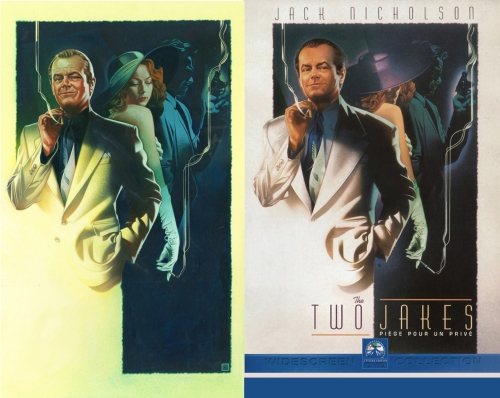ROUGHS, COMPS, AND FINISHES
by rodriguezfineartprintsca

On illustration projects, the normal process is for the art director to either send me a very rough sketch or at least a description of what they want their painting to contain. I thought it might be interesting to show the way it all comes about. My roughs are usually so rough that I don’t even intend to show them to any client. They are just for my own use to work out concepts and designs. People often wonder how I can tell anything from the scribbles I do, but they really contain enough that I know if that direction is something I can develop or not. I might fill pages with roughs like this, before I hit on one that works. Nowadays, I do them digitally, but the idea is still to develop a sketch that shows promise. I really don’t want to spend time making a good drawing. I want to crank out as many ideas as possible, so I work very quickly.
It is interesting to me that when I hit on one decent direction, the pressure is off. I know that I can always use the first good one if I can’t think of anything else. But once that one is in the bag, I am free to really try other ways to approach the job, without worrying about results. And it is usually one of the later sketches that I wind up going with, because they are a lot freer, and more adventurous.
Then I have to tighten things up a little so the art director and the client can understand what I have in mind. This would be the comp stage. I often do my comps in color, which sometimes isn’t a good idea, but it really helps me to think about what the finished art will look like. But it also gets me in trouble because a client might perseverate on some color choice I’ve made, when I have always intended to adjust that in the final painting. Also, sometimes a client falls in love with something that I may want to change in the finish, but they love it, so I can’t. Even after all these years, I haven’t come up with a completely satisfactory way to present my sketches or comps.
I remember one project where the client said, “Don’t use any green.” No explanation, just don’t do it. Of course that is like telling someone, “Whatever you do, don’t dream about monkeys.” That night, it is almost guaranteed that monkeys will be in every dream you have. I remember struggling to do my painting with no green at all, and then breaking down because I just had to use green in one spot. The art director loved the painting, and when I apologized for the little touch of green he said, “Oh, that wasn’t really important. I just don’t particularly like green so that was a suggestion only.” I spent hours trying to avoid that color, and it made no difference at all.
I hope you can see how a rough sketch develops into the finish. Each step takes me closer, and the design is finessed, and the colors are brought together. Doing the finished art is a lot more involved than just getting the drawing tighter. I’ve heard of artists that can see the finish in their heads before the start. Wouldn’t that be wonderful? That’s not me. It is a step-by-step process, and every mark, requires another mark to tie in with it, until there is nothing else needed. Then it is finished.

The drum majorette was for the 60th anniversary of 3M electrical tape. The first sketch was the art director’s rough, showing me what he wanted, then my rough to develop a direction, then my comp for him to approve, then my finish.


The two panels above show my rough for myself, then the comp for the art director and client approval, and then my finish.

Movie posters were an entirely different thing. Basically the comps were almost finished art. This was my comp for The Two Jakes, and my finish. I am going to post these two again sometime soon, because I want to include the sketch that Steve Chorney did that inspired this approach. But I don’t have it right now.
